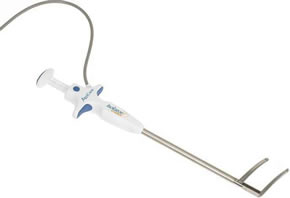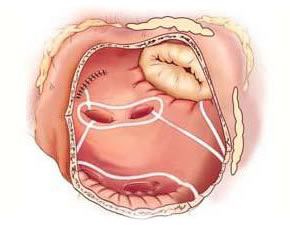Cox Maze Procedure
The Cox Maze procedure is a type of cardiac surgery performed to treat atrial fibrillation (an irregular or abnormally fast heartbeat.) Atrial fibrillation occurs when the heart's natural pacemaker is interfered with by disorganised electrical signals sent from other parts of the heart.

The surgery can involve several different varieties of incision to access the heart, where the surgeon will use a surgical ablation energy source to create lines of scar tissue on the area being disrupted by electrical signals. This prevent them from interfering with the heart's natural rhythm, and cures the atrial fibrillation.

The procedure is performed in an operating room under general anesthesia.
Atrial fibrillation can occur for a huge number of reasons. This includes, but is not limited to, congenital conditions, cardiomyopathy, high blood pressure, lung diseases and heart valve issues. It is most commonly a concomitant symptom to other cardiopulmonary problems, although it is known to sometimes occur in isolation or as a result of excessive consumption of alcohol or coffee.
Open heart Cox Maze procedure is usually performed on patients in combination with treating some other cardiac problem at the same time.
Another less invasive alternative to the Cox Maze procedure is radio-frequency ablation which is performed through a groin cut under local anaesthesia. However, this is generally reserved for patients for whom atrial fibrillation is the only issue or more major surgery is not recommended.
Atrial fibrillation is usually accompanied by symptoms related to a rapid heart rate. Rapid and irregular heart rates may be felt as palpitations, and may produce chest pain. Other possible symptoms include congestive symptoms such as shortness of breath, especially at night, or swelling, often around the ankles.
Since most cases of atrial fibrillation are secondary to other medical problems, the presence of chest pain, signs and symptoms of hyperthyroidism (an overactive thyroid gland) such as weight loss and diarrhea, and symptoms suggestive of lung disease can indicate the underlying cause.
Diagnosing atrial fibrillation is relatively trivial, as it can be seen clearly on an electrocardiogram. Instead, diagnosis generally revolves around identifying the root cause of the arrhythmia itself. That may include taking a complete family medical history, a transthoracic echocardiogram, exercise tests, an electrocardiogram (ECG), taking a complete blood count, and even a chest X-ray if a pulmonary cause is suspected.
There are a number of alternative treatments available for atrial fibrillation in isolation, including medications, having a pacemaker installed, and a technique known as cardioversion which involves shocking the heart with an electrical current at a certain point during the heart's rhythm in order to stabilise it.
Another surgical alternative to the Cox Maze procedure is the "Mini maze", which is a less invasive version of the same procedure. However, this is generally reserved for patients for whom atrial fibrillation is the only issue or more major surgery is not recommended.
Success rates vary depending on the underlying complexity of each case, as the surgery usually takes place in combination with other surgeries, but in around 80% of cases the Cox Maze procedure results in complete freedom from atrial fibrillation.
The surgery itself possesses roughly the identical risk to the other surgery being performed. For example, in mitral valve replacement plus Cox Maze procedure, the five year survival rate is around 95%, the same as mitral valve replacement performed in isolation.
In comparison to mitral valve replacement alone when treating atrial fibrillation, the Cox Maze procedure is significantly more effective.
Recovery time depends on the health and age of the individual, but a full recovery may take up to two months, with most people returning home one week after their operation. There will be a single scar on the chest area. There are limitations on heavily lifting and driving for up to six weeks after the operation.

